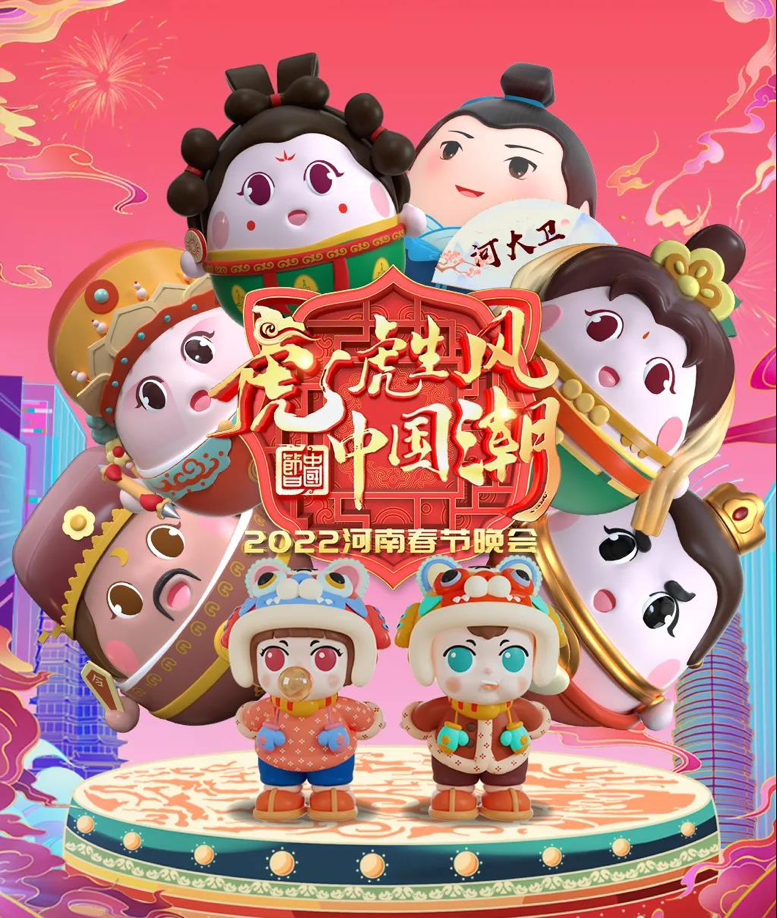A culturally boundless “Chinese wave” at China HNTV’s Spring Festival Gala
02-02

On December 28th in the lunar calendar (January 30th, 2022), China HNTV’s Spring Festival Gala was shown to global audience online.
At this evening gala featuring “Chinese tigers’ wave”, our emotions for our home and country and Chinese character penetrated from start to finish. When the last melody for the last image was played, Chinese people’s profound emotions gushed out like a fountain. It seems that three words were emerging clearer in every audience member’s mind.
The first word was “home”. Home is where family love, homesickness, hometowns, hometown accents, cross-generational heritage, peace, beautiful nature and abundant harvests are. It is also when scattered family members simultaneously view the same moon under the same sky.
During the dance “Children Growing up by the Yellow River”, we saw artworks made from intangible clay deeply reproduced the good old times of our innocent childhood. Why is this soil deeply loved by many? It is because we call it our “home”.
The song and dance “Chinese Door Gods” combined traditional Chinese cultural elements of classic dances, martial arts moves and popular street dances, perfectly assembling traditional beauty, strength and trendiness, making people realize that traditional weapons can look so wonderful. Why do fierce-looking door gods make people all tearful? It is because behind them is where these people call “home”.
The second word was “year”. While traditional Chinese culture is as deep as sea, China HNTV only focused on “Chinese festivals” and sipped them like tea, bit by bit to taste its essence and inherited value.
In the Year of the Tiger, Henan’s Spring Festival Gala was semantically based on “Nianyuzhou” and connected with the theme of “AI robots”, so as to bring to you a marvelous evening with songs, dances, traditional Chinese opera, Tai Chi, intangible cultural heritage, cross talk and sketch performances spanning many times and categories. Through microcosms, it featured China’s scenes, arteries and veins, and facts over its 5,000 years of history.
The dance show “A Year of Bumper Harvest” demystified the structure of the word “year” in oracle, and manifested the harmonious coexistence between humans and nature through the dancers’ performance. The golden wheat-like color symbolized a bumper harvest and forecasted the strength of lives.
In “Red Lanterns”, the creator, using the structure of festive lanterns, describes how lanterns are crafted to symbolize cross-generational cultural heritage, and expresses the beauty of traditional Chinese culture and crafts through dance vocabulary from different times and scenes. Bearing in mind both the tradition and history, this mentality welcomes the new and is the indispensable philosophy of traditional Chinese culture passed on to us by traditional festivals.
The third word was “Chinese”. Chinese represents is elegance, age, and the grand and majestic China.
While watching “Exquisite Beauty and Heavenly Fragrance”, you will keep thinking about one question – what do festivals actually mean to us?
The apparent meaning is, of course, joyful ceremonies and a lively atmosphere.
At a deeper level, by celebrating festivals together, migrants and expats are certain about their roots, from which they find their cultural identity.
The song and dance “Health to the World” read traditional Chinese medicine culture through fashionable music and dance moves. Dance show “Army of Heroines” brought together strength and softness, and showed respect to women from different times for their independence, self-strength and emotions for their homes and country through stories that combined audio and video.
Some say the best way to express your homesickness is to display your hometown’s culture. From the Year of the Ox to the Year of the Tiger, the series of evening galas and high-demand products have helped traditional Chinese culture scatter many promulgation seeds.
From this perspective, the evening gala for the Year of the Tiger has an impact that goes beyond national frontiers and is based on shared culture and identifying cultural roots, which is triggering the whole world’s Chinese to share the same emotions, culture and feelings. It renews our contemporary understanding of the influence and meanings to us of both festivals and traditions.
